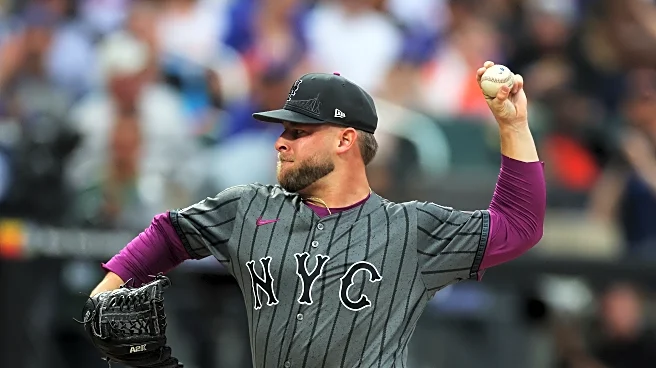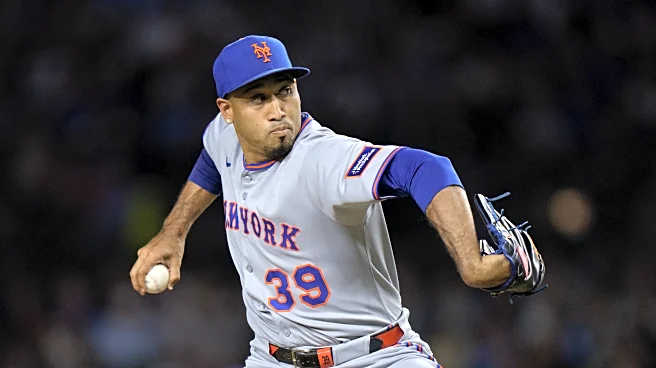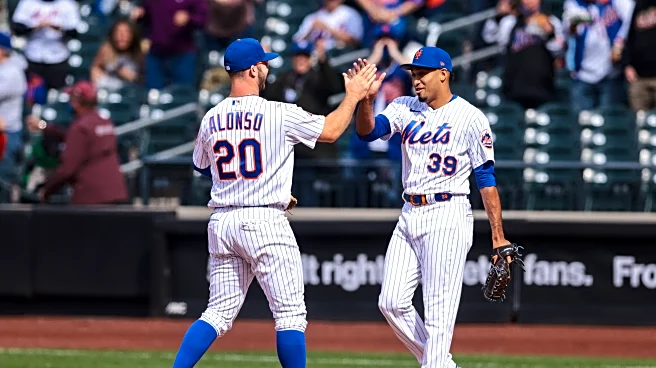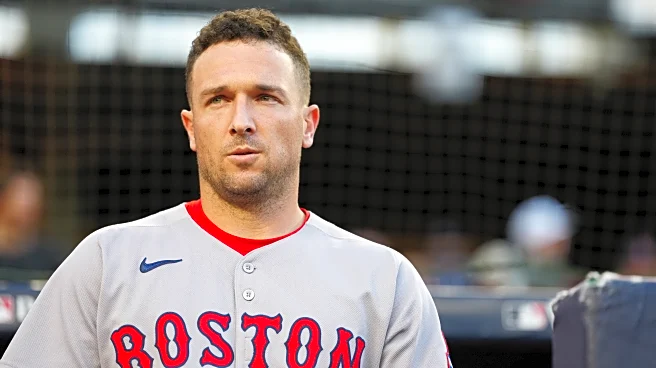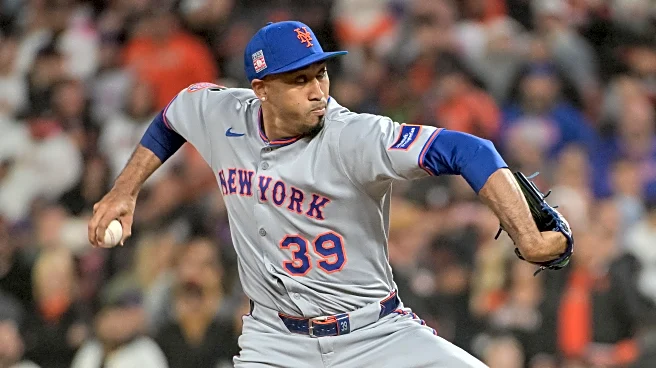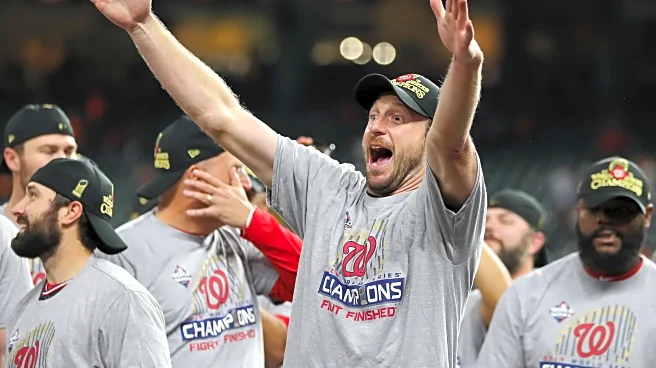On paper, the Mets adding Ryan Helsley to serve as Edwin Díaz’s set up man down the stretch was an appropriately aggressive idea. The club acquired the All Star closer in exchange for Jesus Baez (their
No. 8 prospect at the time, according to MLB Pipeline), RHP Nate Dohm (their No. 14), and RHP Frank Elissalt. Baez was probably the most exciting name in the package, and for a pitcher of Helsley’s caliber, it was considered a shrewd gamble. David Stearns’ primary focus at the deadline was to build a lockdown bullpen—between the additions of Helsley, Gregory Soto, and Tyler Rogers to join Díaz—to help push New York across the finish line.
Unfortunately, while it looked good on paper, in practice it proved to be one of many decisions that led to the team’s undoing. While Helsley wasn’t even the worst performing player of the guys New York picked up—that dubious distinction belongs to Cedric Mullins—his struggles were front and center as the team completed its catastrophic collapse. That, coupled with his pronounced issue with tipping pitches, made this an all-around disaster of a move for New York, and unfortunately will lead to Helsley’s name forever sending shivers down the spines of Mets fans (especially when he returns to form in another uniform next season).
The hard-throwing Helsley has had good and bad years during his career, but his 2024 campaign was by far his best. The right-hander finished the year with an NL-best 49 saves while posting a 2.04 ERA and a 2.41 FIP in 66 1/3 innings. He finished ninth in Cy Young voting and was named to his second All Star team. His 2025, while not as flashy, was still solid, as he picked up 21 saves with St. Louis and owned a 3.00 ERA and a 3.55 FIP in 36 innings prior to the trade. His numbers with New York were…considerably worse, as he pitched to an unsightly 7.20 ERA and 5.19 FIP in 21 innings. He posted a 1.0 bWAR with St. Louis and almost matched that on the negative side, finishing with a -0.9 bWAR in New York.
Upon his arrival, Carlos Mendoza immediately utilized him in high leverage situations, as intended. He brought along with him a flashy entrance to AC/DC’s classic “Hell’s Bells” which, combined with the ever-popular “Narco” entrance of the club’s closer, offered a tantalizing and raucous one-two punch for fans at Citi Field. However, over time it proved his time in games really was hell on Earth for Mets fans, as he could hardly escape an outing without surrendering a run or two or, worse yet, the game altogether.
His stint in New York started innocently enough, with a scoreless ninth in an extra inning loss to the Giants. He suffered a loss his next time out in extras, albeit with two unearned runs that were aided by the extra runner and a fielding error. He didn’t surrender an earned run through his first four outings, but then he ran into a rough patch that he couldn’t outrun. From there, he allowed at least one earned run in four straight outings and in six of his next eight appearances. In that 12-day stretch in mid-August, he allowed ten earned runs in 5 1/3 innings, picking up four blown saves and added two losses to his record. This included three consecutive blown games against the Brewers on August 10, the Braves on August 14, and the Mariners on August 15, all games the Mets wound up losing. The team eventually began experimenting with Helsley in blowout situations, and in one such outings in that stretch, he allowed three earned runs in an inning with the Mets up eight runs.
Mendoza using Helsley in lower leverage situations became more commonplace from that point forward. Helsley was very vocal about his issue with tipping pitches, making it very known he was working on it in between outings and even within games. He continued to struggle, allowing six earned runs over his next 4 1/3 innings, including another outing where he allowed three earned runs. However, something changed around mid-September. Over his last six outings, he hurled seven shutout innings, scattering three hits while striking out six.
Unfortunately, Helsley found his groove a little too late to make a difference for New York, and had they gotten that Helsley just a few weeks early, we are likely at the very least talking about them as a playoff team. Helsley could have been a fun acquisition for New York, between his entrance music and his undeniable talent, but he will go down as another great player who wilted under the bright lights of New York City. There’s not really much the Mets can learn from this situation, as it was just an example of good process, bad results. It’s hard to fault Stearns for acquiring Helsley as a rental at the price, but it just didn’t work out. The right-hander will almost certainly depart and, despite the bumpy pit stop in New York, will very likely receive a contract to close somewhere. The Mets, meanwhile, will go about looking to rebuild almost all of their bullpen, in the hopes that their offseason efforts go better than their trade deadline missteps.


